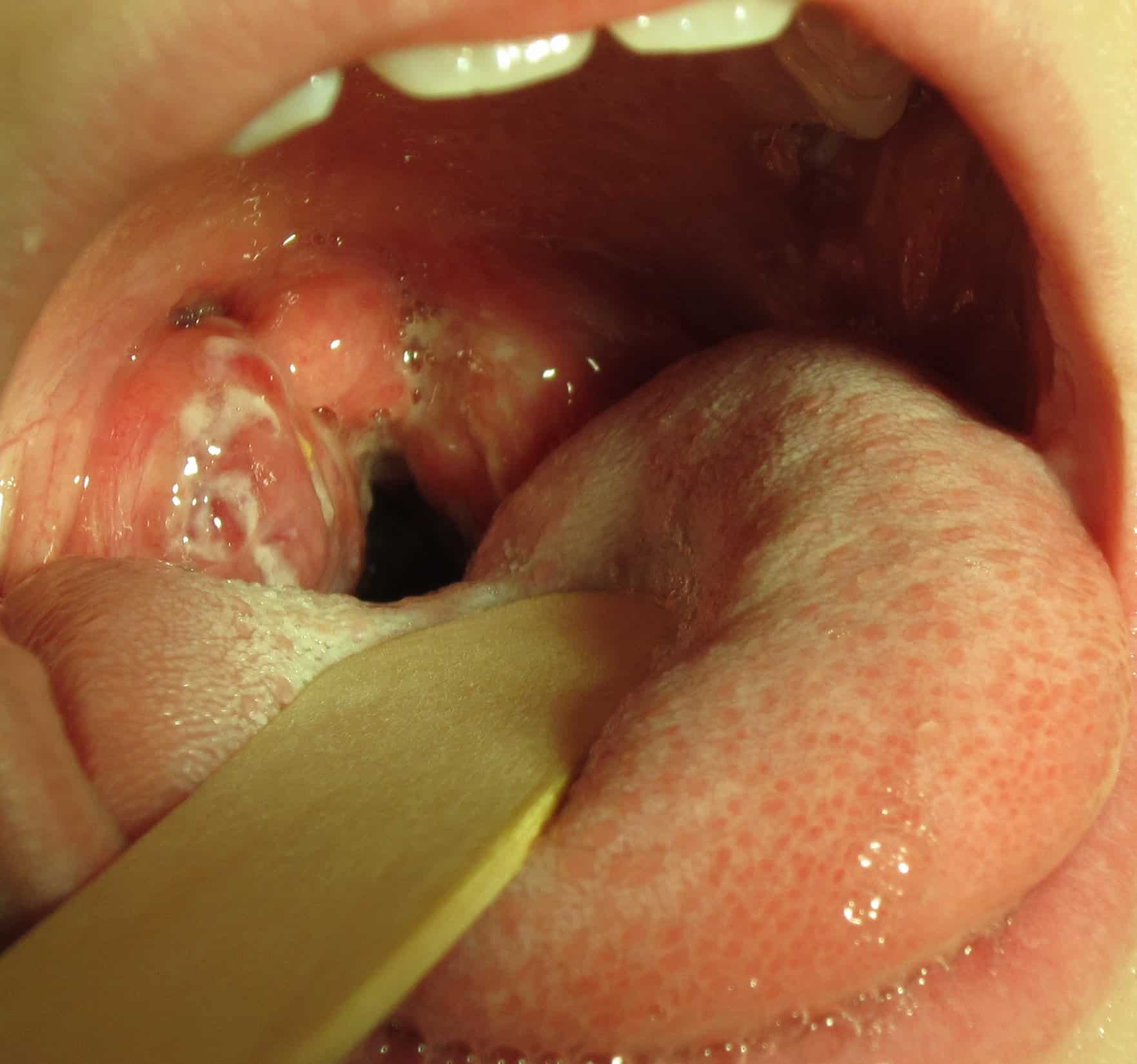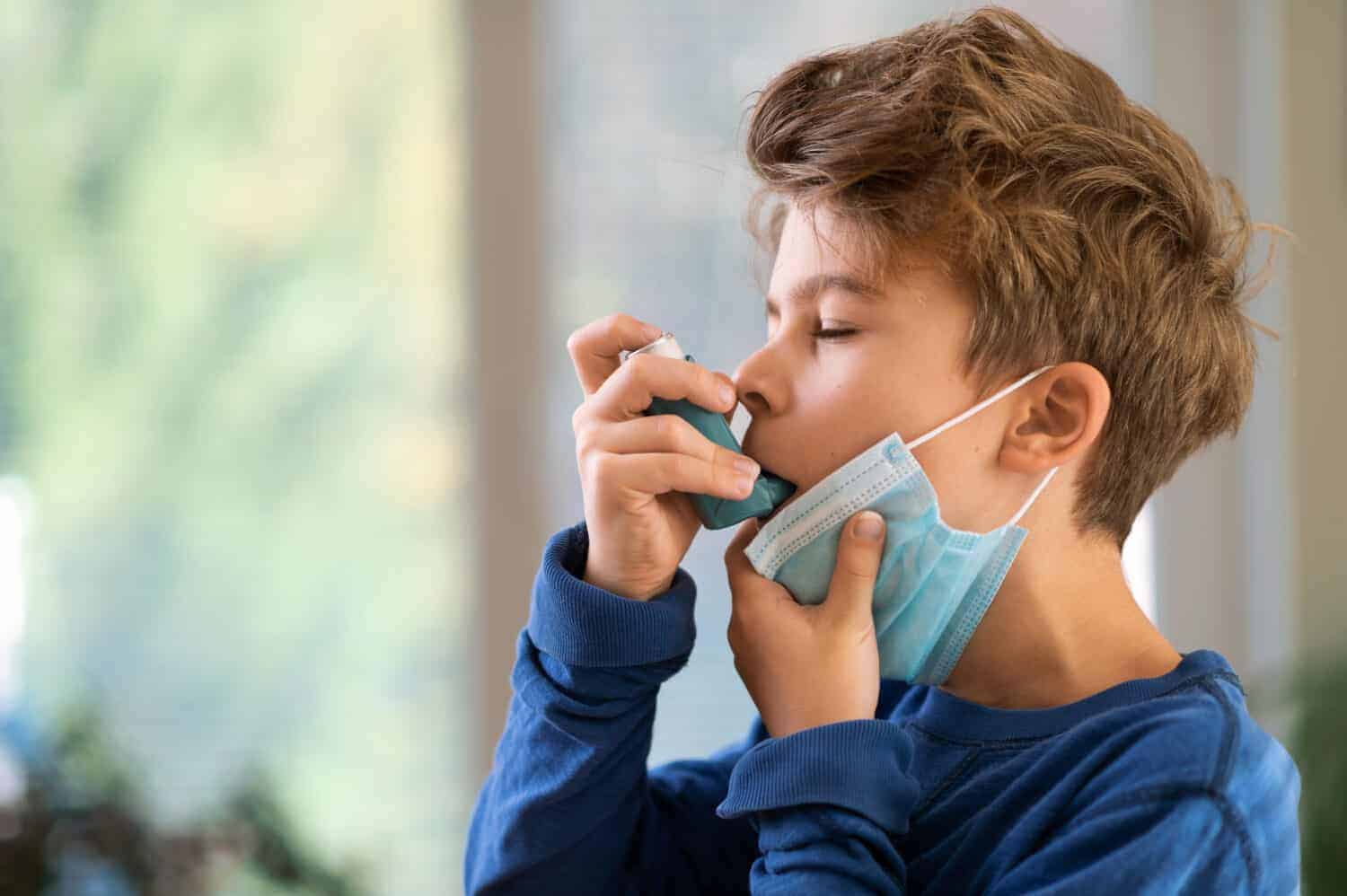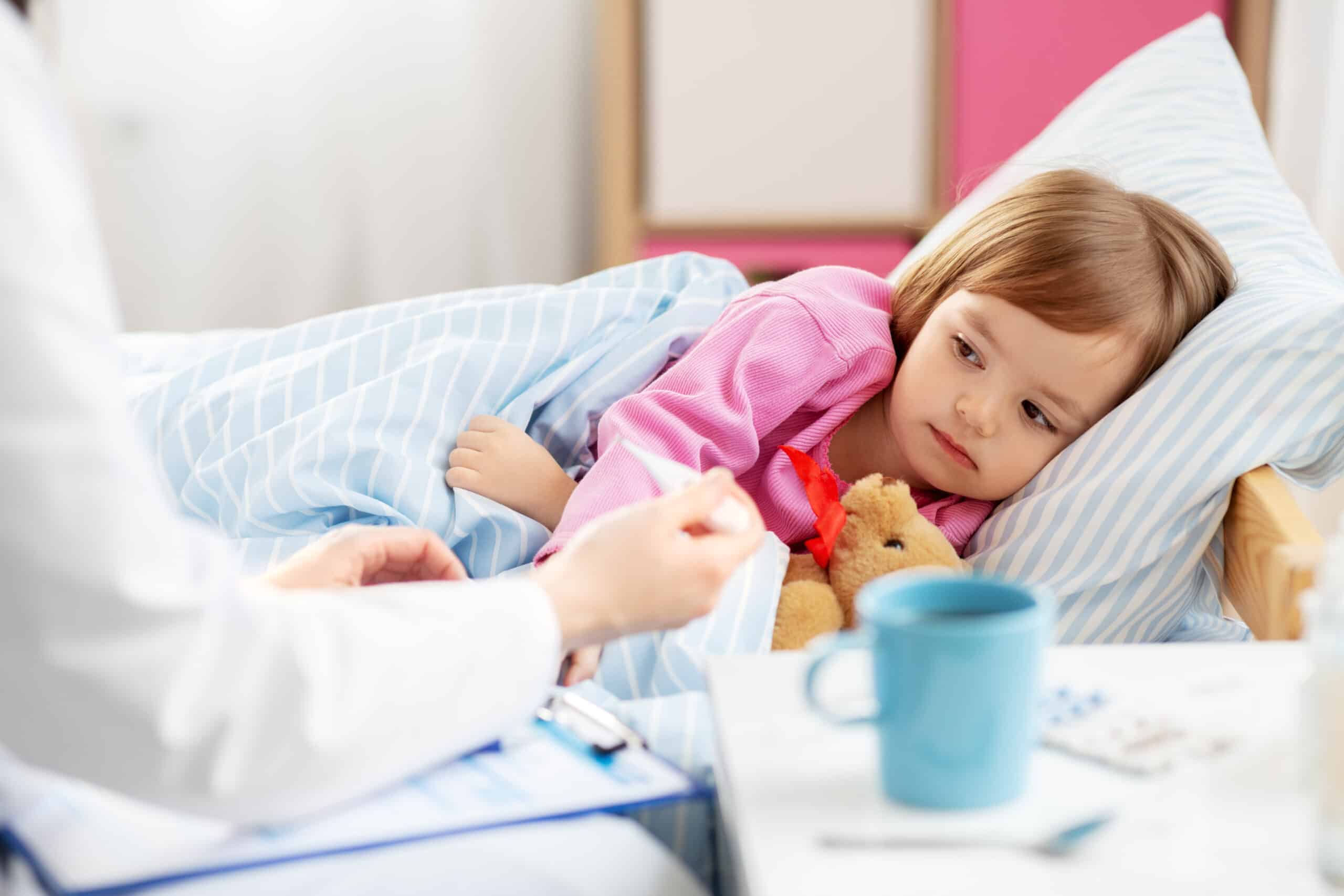As parents, we often find ourselves dealing with a fair share of challenges. As children grow and develop, they are vulnerable to the most common childhood ailments that may compromise their general health. However, these childhood ailments are part of life and help them build up healthy immune systems. In this article, we will examine the most common childhood ailments and how to treat them.
Disclaimer:The content of this article should not be taken as professional medical advice. It is important that you do your own research on issues related to your health. Before making any decisions related to your health or the health of your family, you should always call your doctor when in doubt.
1. Earache

©Yuliya Evstratenko/Shutterstock.com
In young children, ear pain and earache are quite common. Even though it can be painful, it is not generally a sign of anything serious. There are a few causes, including swimmer’s ear (where the skin in the ear canal has an infection), ear infection (otitis media, which is an infection or pain in the middle ear), toothache that travels up the jaw and into the ear, sinus or cold infection, or tonsillitis.
Most earaches usually clear up within a few days, depending on the cause. When in doubt, you should always consult your healthcare provider. They will be able to tell you the cause and decide what the best treatment option will be. To help relieve pain at home, you can place a cold or warm cloth on the ear and use ibuprofen or paracetamol. Do not put cotton buds in the ear or try to remove ear wax. Additionally, you can speak to your pharmacist; they may be able to provide you with an over-the-counter (OTC) ear drop.
2. Allergies

©Tatiana Foxy/Shutterstock.com
Children who often have an outbreak of hives or rash, cough or sneeze a lot, or feel nauseous and get stomach cramps after eating certain foods, touching latex, being stung by an insect, or taking medication could have allergies. Common food allergies are to milk and peanuts. Other causes could include shellfish, fish, eggs, tree nuts, and soy. Children can often outgrow allergies to wheat, eggs, milk, and soy; however, shellfish, fish, tree nuts, and peanuts could last a lifetime. Frequent coughing and sneezing could be due to pet hair, molds (tiny fungi that float in the air like pollen), dust mites, and cockroaches. Some medicines can cause an allergic reaction, such as insulin, antibiotics, chemotherapy, and nonsteroidal anti-inflammatory drugs. Speak to your pharmacist they may provide you with an antihistamine. When in doubt speak to your doctor when concerned about allergies.
3. Eczema

©Shevtsova Yuliya/Shutterstock.com
Eczema causes itchy, dry patches on the skin and usually affects 1 out of 10 people. Today, in the United States, there are approximately 9.6 million children under the age of the age of 18 who have eczema. Studies have shown that at least 80% of children will outgrow eczema by the time they reach adulthood. While there is no cure, the treatment options are to moisturize the skin every day and sometimes multiple times per day to prevent the skin from becoming dry and itchy. Corticosteroids, salves, and creams can be used to reduce redness and swelling when it flares up.
Furthermore, avoid things that could cause triggers, such as certain fabrics, heat, detergents, or soaps. There can also be certain foods that can trigger eczema, like eggs and milk; however, you should speak to your GP first before eliminating certain foods from your child’s diet. Should your baby have eczema, keep their nails short and put mittens on their hands to help prevent scratching.
4. Chicken Pox

©Ekaterina_Minaeva/Shutterstock.com
Chickenpox is caused by a virus, and it is highly contagious. It causes a red rash, then the blisters form a scab, and lasts for about 10–14 days. The rash first appears on the face, back, chest, and then the rest of the body. Once all the blisters have turned into scabs, then your child is no longer contagious. It spreads through bodily contact and bodily fluids. There have been fewer cases of chickenpox since the vaccine was developed in 1995. However, each year, there are still children who catch it. Once you have had chickenpox, you won’t have it again. Furthermore, if you have never had the vaccine, you can get chickenpox at any age. You become very ill if you get it when you’re an adult.
Symptoms may include headache, fever, loss of appetite, and tiredness. Keep your child at home until he or she is no longer contagious. You can treat chickenpox at home by keeping your child cool, taking a cool shower or bath daily, and pressing a cool cloth on the rash. You can also put some oatmeal in the bath water and soak for 10–15 minutes. Oatmeal helps ease inflammation and itching. Pat your child dry gently with a soft towel. To prevent dehydration, give your child plenty of fluids. Trim their fingernails and encourage them not to scratch; scratching can cause scarring. If your child has a fever, use Tylenol or paracetamol. Furthermore, you can ask your pharmacist for an antihistamine lotion to put on the rash.
5. Common Cold

©Lipatova Maryna/Shutterstock.com
It is important to teach your child good hygiene habits. Children often get the common cold because they frequently touch their mouths, eyes, and noses without washing their hands. According to Stanford Medicine, the majority of children have the cold 6–8 times a year, and those who attend daycare will have more. Colds are more likely to occur during the fall and winter. Symptoms in babies include fussiness, fever, trouble sleeping, congestion, and sometimes vomiting and diarrhea. Older children may have watery eyes, runny, stuffy noses, sneezing, tickling, sore throats, coughs, aching muscles, congestion, discharge that is thick and turns yellow or green, chills, headaches, fatigue, and a fever.
To treat your child with the common cold, you can give them warm chicken soup, plenty of fluids, and saline nasal spray. Use a cool-mist humidifier at night to help with breathing, and rub their chest with Vicks vapor rub. Furthermore, you can purchase over-the-counter (OTC) cold medications. According to popular reviews, Mucinex Children’s Day & Night Multi-Symptom Cold, Zarbee’s Kids Cough and Immune Day/Night, and Boiron-Chestal Cold and Cough are excellent choices. When in doubt, call your doctor.
6. Strep Throat

©"Strep throat2010" by James Heilman, MD is licensed under BY-SA 3.0. - Original / License
This common ailment affects children between the ages of 5 and 15 and is contagious. The bacteria known as Group A Streptococcus is an infection in the throat and tonsils. Symptoms may include swollen lymph nodes, stomach aches, fever, and difficulty swallowing. Your doctor will be able to diagnose strep throat by performing a throat culture test or a rapid strep test. To treat strep throat, antibiotics are usually prescribed.
In addition, encourage your child to rest. You can give your child salt water to gargle, and for pain relief, use Tylenol or Ibuprofen. If the air is dry, use a humidifier and offer plenty of fluids to avoid dehydration. You can also purchase throat lozenges to help soothe the throat. Strep throat should never be ignored. When in doubt, contact your healthcare provider. According to the Centers for Disease Control and Prevention, there are approximately 5.2 million outpatient visits each year in the United States with strep throat.
7. Hand Foot and Mouth Disease

©"File:Hand foot and mouth disease on child feet.jpg" by Ngufra is licensed under BY-SA 3.0. - Original / License
Our next common child sickness is hand, foot, and mouth disease, which is caused by the coxsackievirus. This contagious infection causes severe, painful red blisters on the hands, feet, throat, mouth, and even the diaper area. Children under the age of 7 are at greatest risk. Infections of this common sickness occur in areas where children play close together, such as schools, preschools, daycare centers, and summer camps. Symptoms normally clear up within 7–10 days.
Hand, foot, and mouth disease is spread through contact with unwashed hands, saliva, fluid from the blisters, feces, and mucus from the nose. While there is no cure for the common childhood ailment, you can help treat the symptoms. In addition to the blisters, children often have a fever for a couple of days. This can happen because they get dehydrated, as it is extremely painful to swallow. To avoid dehydration, treat mouth pain with Tylenol and ibuprofen. Offer soft foods such as smoothies, ice cream, ice pops, yogurt, and pasta. Offer water, milk, and bland drinks. Do not offer fruit juices, as the acidity will cause the mouth to sting more.
8. Croup

©PeopleImages.com - Yuri A/Shutterstock.com
Approximately 3% of children are diagnosed with croup each year in the United States. When a child or baby has a constant cough that sounds like a dog or seal barking, they could have croup. This childhood ailment is more common in boys than in girls. Croup is when children experience swelling in the windpipe. The swelling narrows the windpipe, causing a “barking” sound when the child breathes. Croup usually clears up in 3-5 days. Your healthcare provider will diagnose croup.
To treat croup, you should make sure you keep your child well-hydrated and encourage him or her to take naps. Use a cool mist humidifier when the air is dry to help your child breathe. If you do not have a humidifier, allow your child to stand in front of an open freezer door for a few minutes to breathe in the cold air. Always consult your healthcare provider if you have any concerns. If your child has severe croup, your doctor might prescribe corticosteroids or epinephrine. Follow the croup link above to find out more.
9. Asthma

©KaliAntye/Shutterstock.com
One of the most common childhood ailments and very costly is Asthma. According to the ACAAI, there are 4.6 million children under the age of 18 who have asthma in the United States. Asthma is a chronic respiratory disease affecting the lung airway, making breathing difficult. Asthma is often genetic. Weather conditions can make asthma worse. Treatment includes using drug therapy, such as anti-inflammatory drugs and bronchodilators. A peak flow meter monitors, avoids, and recognizes allergen triggers. It is important to create an effective emergency plan for severe episodes. To improve asthma, many people use plants and Chinese herbs. Vitamins C, D, and E may lower your risk of symptoms. Maintaining a healthy body weight can also improve asthma. Eating a lot of fresh fruit and vegetables provides the body with antioxidants that can reduce lung swelling. Regular breathing exercises are recommended. Furthermore, regular checkups are recommended with your healthcare provider.
10. Measles

©JabaWeba/Shutterstock.com
Finally, the last most common childhood ailment on our list is measles. It is highly contagious, and it affects the respiratory tract and then spreads throughout the rest of the body. Symptoms include a runny nose, cough, high fever, watery red eyes, and a rash that covers the whole body. It is best to get your child vaccinated to prevent getting it and spreading it to others. There is no specific treatment; however, you should make your child comfortable and ensure that he or she is drinking enough water and eating healthy. If your child’s symptoms are severe, contact your doctor immediately. Your doctor may prescribe antibiotics to treat ear, eye, and pneumonia infections.
The image featured at the top of this post is ©iStock.com/dolgachov.
